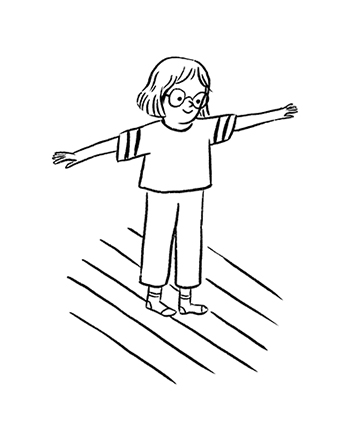Moving with the room: why it’s good for children with disability, autism or other additional needs
A move with the room activity involves using the shapes and lines you can see in a room to explore the space. For example, it might be walking along the lines on the carpet or bending down on hands and knees like a table.
A move with the room activity can encourage children with disability, autism or other additional needs to use their imagination. It can also improve their physical coordination and gross motor skills. And it’s good for children who have difficulty with social interaction. That’s because it can be a great way to play alongside others rather than face to face.
A move with the room activity can be good for children at stressful times. This is because it can help children become aware of their surroundings and feel comfortable in unfamiliar places. It’s particularly good for children who find change difficult.

What you need for a move with the room activity
Children can do a move with the room activity anywhere. It works best in rooms where there’s a lot of furniture or features – for example, windows, carpets, rugs and floorboards.
Children can do this activity by themselves, with you or with other people.
How to play move with the room
To begin with, you and your child can play move with the room together. Here’s how to get started:
- Look around the room with your child and talk about the different shapes or lines you see.
- Practise making 1-2 shapes. For example, ‘Show me how you could make a table shape with your body?’, ‘Show me how you could walk along the floorboards like a tightrope?’ or ‘Can you make your body stretch to fill the doorway?’
- Plan a path around the room.
- Follow your path around the room, stopping to make the shape of objects, furniture or floor coverings.
Ideas and options
- If you’re playing move with the room with other people, take turns following a leader as they move around the room.
- Work together to make shapes. For example, you could join your hands over your heads to make a doorway. Or one person could kneel on hands and knees while the other person sits on their back to make a chair.
Move with the room can be a fun activity to do with children of different ages. You might find children of different ages see the room quite differently.
How to adapt move with the room to suit children with diverse abilities
Children with restricted mobility might need you or another carer to help them move into different shapes. Or you might need to adapt the pathway through the room to suit their mobility.
Children with impaired vision might need you to describe the room for them. Or they might need extra time to explore the room. Make sure you let them know about any tripping hazards.
For children who find social interaction difficult, try smaller, less noticeable movements. Children could use their fingers to trace the shapes they see in the air or do a drawing showing the shapes and lines they see.
Looking for more play and learning ideas for your child? You might like to explore our other activity guides. Some of these have been created for typically developing children, but they can all be adapted to suit children with diverse strengths and abilities.